BMW 1 Series vs Mazda MX-30 – Which model is better for everyday use?
Compare performance, boot capacity, efficiency and price at a glance.
Find out which car is the better choice for you – BMW 1 Series or Mazda MX-30?
Costs and Efficiency:
When it comes to price and running costs, the biggest differences usually appear. This is often where you see which car fits your budget better in the long run.
BMW 1 Series has a hardly perceptible advantage in terms of price – it starts at 28800 £, while the Mazda MX-30 costs 30800 £. That’s a price difference of around 2048 £.
Engine and Performance:
Under the bonnet, it becomes clear which model is tuned for sportiness and which one takes the lead when you hit the accelerator.
When it comes to engine power, the BMW 1 Series has a decisively edge – offering 300 HP compared to 170 HP. That’s roughly 130 HP more horsepower.
In acceleration from 0 to 100 km/h, the BMW 1 Series is convincingly quicker – completing the sprint in 4.90 s, while the Mazda MX-30 takes 9.10 s. That’s about 4.20 s faster.
In terms of top speed, the BMW 1 Series performs clearly better – reaching 250 km/h, while the Mazda MX-30 tops out at 140 km/h. The difference is around 110 km/h.
Space and Everyday Use:
Whether family car or daily driver – which one offers more room, flexibility and comfort?
Both vehicles offer seating for 5 people.
In curb weight, BMW 1 Series is distinct lighter – 1465 kg compared to 1849 kg. The difference is around 384 kg.
In terms of boot space, the BMW 1 Series offers barely noticeable more room – 380 L compared to 350 L. That’s a difference of about 30 L.
In maximum load capacity, the BMW 1 Series performs barely noticeable better – up to 1200 L, which is about 45 L more than the Mazda MX-30.
When it comes to payload, BMW 1 Series evident takes the win – 510 kg compared to 402 kg. That’s a difference of about 108 kg.
Who comes out on top?
Overall, the Mazda MX-30 shows itself to be leaves the rival little chance and secures the title of DriveDuel Champion.
It convinces with the more balanced overall package and proves to be the more versatile choice for everyday use.
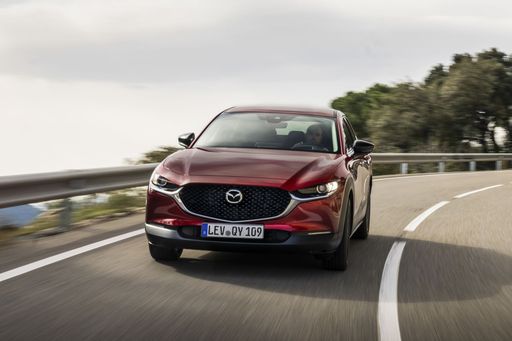 @ Mazda Motor Corporation
@ Mazda Motor Corporation
Mazda MX-30
BMW 1 Series
The BMW 1 Series is a compact premium hatchback that injects a proper sense of driving fun into everyday life, with sharp handling and a cabin that punches above its class. It’s a great pick for buyers who want sporty manners without losing practicality, and yes, you’ll still get that unmistakable BMW grin behind the wheel.
details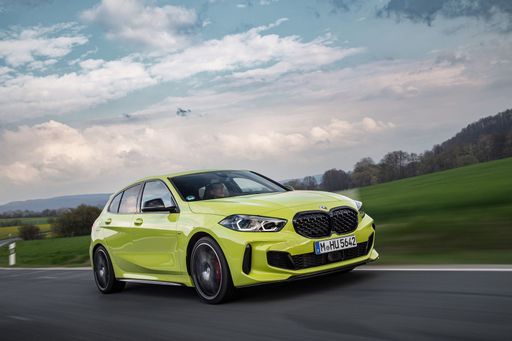 @ BMW Group Press
@ BMW Group Press
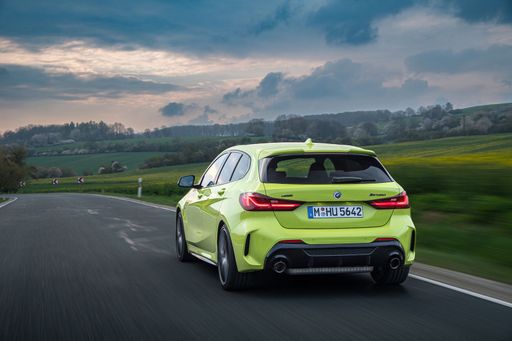 @ BMW Group Press
@ BMW Group Press
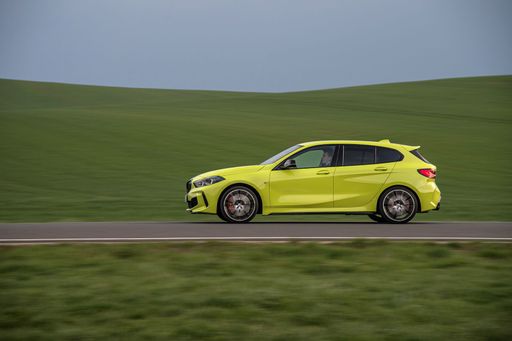 @ BMW Group Press
@ BMW Group Press
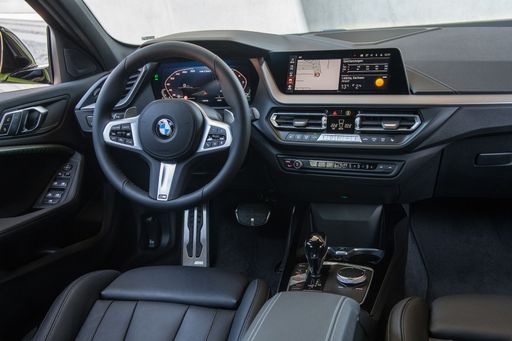 @ BMW Group Press
@ BMW Group Press
 @ BMW Group Press
@ BMW Group Press
Mazda MX-30
The Mazda MX-30 is a compact crossover that combines unique design with an environmentally conscious approach. Its distinct exterior features a coupe-like silhouette and freestyle doors that offer practicality and style. Inside, the cabin boasts sustainable materials, creating a harmonious blend of modern aesthetics and eco-friendly innovation.
details @ Mazda Motor Corporation
@ Mazda Motor Corporation
 @ Mazda Motor Corporation
@ Mazda Motor Corporation
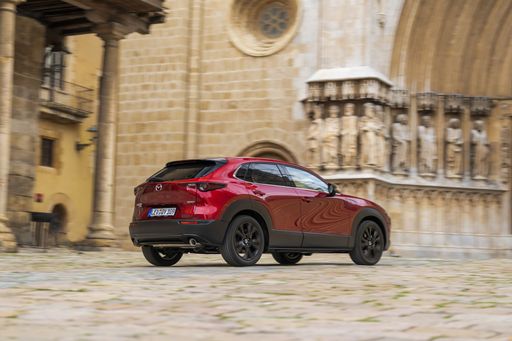 @ Mazda Motor Corporation
@ Mazda Motor Corporation
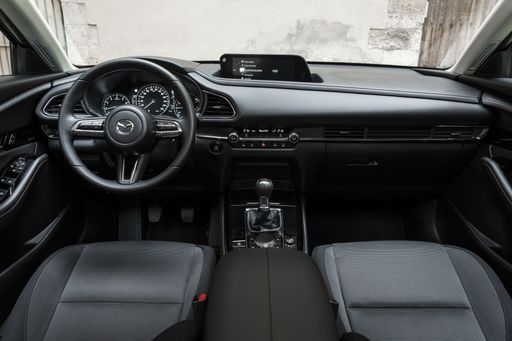 @ Mazda Motor Corporation
@ Mazda Motor Corporation
 @ BMW Group Press
@ BMW Group Press
|
 @ Mazda Motor Corporation
@ Mazda Motor Corporation
|
|
|
|
Costs and Consumption |
|
|---|---|
|
Price
28800 - 51100 £
|
Price
30800 - 37100 £
|
|
Consumption L/100km
4.3 - 7.6 L
|
Consumption L/100km
-
|
|
Consumption kWh/100km
-
|
Consumption kWh/100km
18.30 kWh
|
|
Electric Range
-
|
Electric Range
85 km
|
|
Battery Capacity
-
|
Battery Capacity
-
|
|
co2
112 - 173 g/km
|
co2
22 g/km
|
|
Fuel tank capacity
49 L
|
Fuel tank capacity
-
|
Dimensions and Body |
|
|---|---|
|
Body Type
Hatchback
|
Body Type
SUV
|
|
Seats
5
|
Seats
5
|
|
Doors
5
|
Doors
5
|
|
Curb weight
1465 - 1625 kg
|
Curb weight
1849 kg
|
|
Trunk capacity
300 - 380 L
|
Trunk capacity
332 - 350 L
|
|
Length
4361 mm
|
Length
4395 mm
|
|
Width
1800 mm
|
Width
1848 mm
|
|
Height
1459 mm
|
Height
1555 mm
|
|
Max trunk capacity
1135 - 1200 L
|
Max trunk capacity
1137 - 1155 L
|
|
Payload
475 - 510 kg
|
Payload
402 kg
|
Engine and Performance |
|
|---|---|
|
Engine Type
Diesel, Petrol MHEV, Diesel MHEV, Petrol
|
Engine Type
Plugin Hybrid
|
|
Transmission
Automatic
|
Transmission
Automatic
|
|
Transmission Detail
Dual-Clutch Automatic
|
Transmission Detail
Reduction Gearbox
|
|
Drive Type
Front-Wheel Drive, All-Wheel Drive
|
Drive Type
Front-Wheel Drive
|
|
Power HP
122 - 300 HP
|
Power HP
170 HP
|
|
Acceleration 0-100km/h
4.9 - 9.8 s
|
Acceleration 0-100km/h
9.10 s
|
|
Max Speed
210 - 250 km/h
|
Max Speed
140 km/h
|
|
Torque
230 - 400 Nm
|
Torque
-
|
|
Number of Cylinders
3 - 4
|
Number of Cylinders
-
|
|
Power kW
90 - 221 kW
|
Power kW
125 kW
|
|
Engine capacity
1499 - 1998 cm3
|
Engine capacity
830 cm3
|
General |
|
|---|---|
|
Model Year
2024
|
Model Year
2025
|
|
CO2 Efficiency Class
D, C, F
|
CO2 Efficiency Class
B
|
|
Brand
BMW
|
Brand
Mazda
|
What drive types are available for the BMW 1 Series?
The BMW 1 Series is offered with Front-Wheel Drive or All-Wheel Drive.
The prices and data displayed are estimates based on German list prices and may vary by country. This information is not legally binding.
